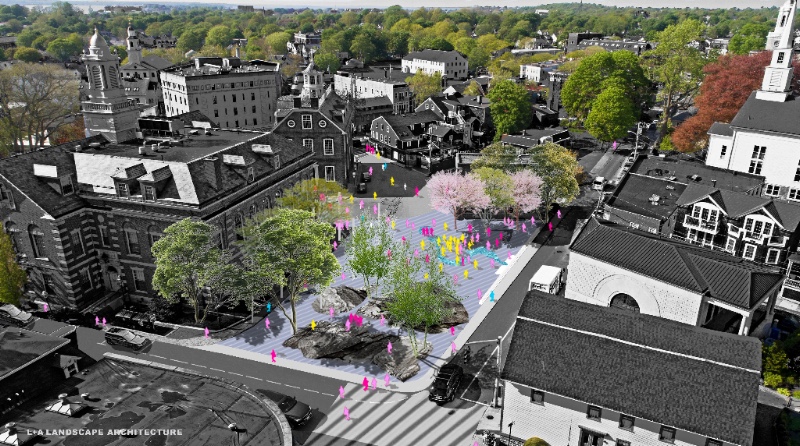In 1639, looking for a new place to form a new community, a small group of colonial settlers found what they were looking for: a deep water harbor with a freshwater spring nearby. The colonial charter readers: “It is agreed and ordered that the Plantation began at this Southwest end of the island, shall be called Newport… and that the Towne shall be built upon both sides of the spring, and by the seaside Southward” And so it is clear that the spring and its location was central to the formation of the new settlement. Where is the location of this precious spring, the thing that made the founding of Newport 375 years ago possible and desirable? Amazingly, for most of the last century or so the spring has been buried under the site of a gas station. That the gas station was on Spring Street, from whence the name of this early road came, is much less surprising.
Many have asked how the birthplace of Newport could come to be buried under a gas station. Although the precise details are lost to history, much of the story is the natural evolution of the community. When early colonists went to get water for themselves, they most probably took their horses and draft animals to carry the water and to be watered themselves. When blacksmith shops were formed, locations near the spring would have been ideal because of the natural traffic of carts and animals. When the automobile began to replace horse-drawn carts, the blacksmith shops would naturally have become gas stations to service the new “horseless carriages” as they were originally often called. Step by step the water which was once the lifeblood of the early colony became irrelevant to the centrality of the site, which had become important as a center for transportation, and in fact, the building immediately behind the gas station was once the bus station.
And what happened to the water that was once the precious resource to which the early Newporters owed their lives and livelihoods? Over time, as deeper wells and eventually, municipal water supplies developed, the natural occurring spring became less of a resource and more of a hazard that was seen as a danger to nearby building foundations and basements and therefore had to be piped out to the Narragansett Bay to be dumped as part of the storm system.
Now there is a group that wants to change all that and purchase the site from the existing owner and remediate it so that it can once again be used for the benefit of the entire Newport community as it once did. The group was formed about a year ago with the task of negotiating with the owner and then raising the funds to undertake the preliminary work of protecting the site from development that might take many decades to undo. A date of mid-January 2015 was set and an amount of $980,000 was set and the group, chaired by Lilly Dick began the difficult task of raising resources. Now the campaign is 85% complete but there is still a gap in funding to be filled, which is where the Newport community as a whole can step in. A campaign for ordinary Newporters to be part of this historic effort has been established. People from within and without the community can go to www.HistoricNewportSpring.org to learn more about the history and goals of the location and to make a contribution so that they can have the satisfaction of knowing they were part of the effort to save Newport’s historic spring.
Many have asked what the ultimate goal of the renovation of the area will be and that has yet to be determined. The Newport Spring leadership felt that before any long-term plans could be made it was crucial to gain control of the parcel to protect it from purely commercial ventures. In the 2012 Washington Square Community charrette, many of the public participants noted that the site was confusing for out-of-town motorists and very dangerous for all pedestrians. Old maps of Newport show that the area was once part of Washington Square and perhaps that might be the future of the area as well. Even after the site is acquired and remediated, the organizers will need to raise funds to collect opinions from the public and either hire a designer or run a design competition. All that is yet to be determined but the leaders of the Newport Spring group have stated that the group is committed to having the parcel be used in a way that is a general benefit to the general public and honors the historic spring that has long been buried beneath the site. If that sounds like something you are in support of as well, lend your voice (and the contents of your wallet!) to help make it so! The time to do so is now.
Looking to remodel your home? Let’s connect.
Join the Architectural Forum to stay up-to-date with architectural news from Rhode Island and abroad.
Ross Cann is an architectural historian, teacher, author, and practicing architect who lives and works in Newport RI for A4 Architecture. He is chairman of the Newport Architectural Forum and serves on the Washington Square Roots Initiative as well as the Washington Square Advisory Commission, which is appointed by the city council to make recommendations to the city on renovations and use of the area.
